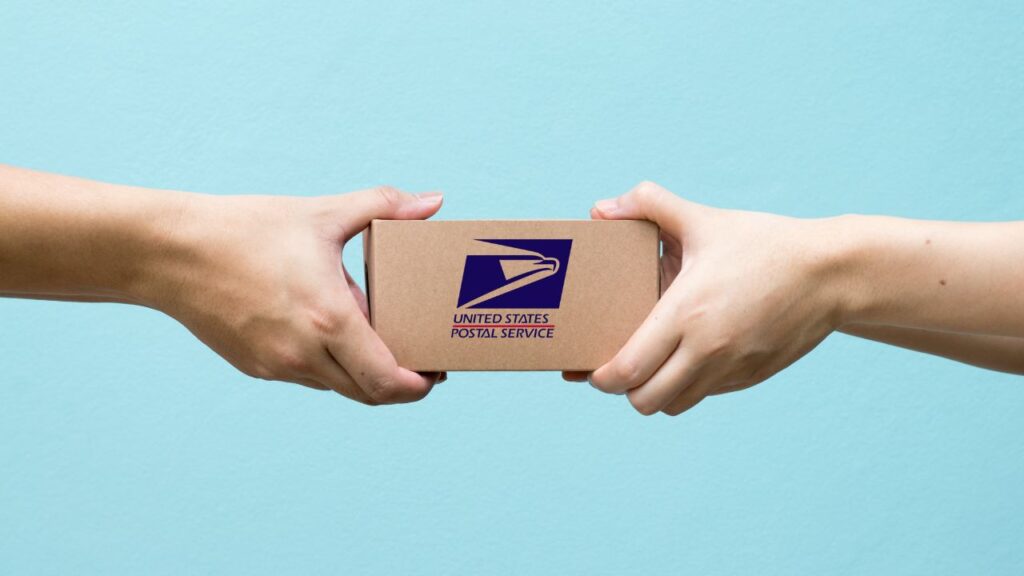When dealing with shipments, tracking your orders helps both the senders and recipients analyze potential shipment times and delays. Mostly, tracking status is represented as simple as “sent,” “in transit,” and “delivered.” However, if you have ever shipped with USPS, you will know that USPS tracking statuses are much more complicated.
In this guide, we will explore the basics of the 11 most common USPS tracking statuses, their details, and more. So, without any further delay, let’s get into it and begin exploring!

| Table of Content |
How to Track USPS Package?
There are multiple ways to track the USPS package, including calling USPS to get updates, using the USPS tracking number to reveal the details on the website, selecting to receive messages every time USPS updates your package’s status, or keeping a check on the tracking status on the mobile app. Though all these methods are worth opting for, the USPS website provides the most up-to-date details.
Normally, you receive a tracking number with every USPS shipment; however, you can still track the order if you haven’t. All you have to do is contact the support team of the shipping software provider or USPS customer service. But, before pressing the dial button, ensure you have all the details: your shipping type, shipment’s value, delivery address, and more.
Once you have provided the details, the officials might provide you with the current USPS tracking status and, most probably, your tracking number so you can keep an eye on the tracking status yourself. If they haven’t, you can ask for the number yourself for an easy way out of the situation; otherwise, you will call the support center over and over until and unless your parcel reaches the final destination.
10 Most Common USPS Tracking Statuses
Here comes the most interesting part: the details of USPS tracking statuses and the sub-statuses that might appear on your way of tracking your packages as they are moving through network. So, let’s have a look!
1. Label Created, Not Yet in System
This is the first status that shows up in the Pre-shipment tracking. “Label Created, Not Yet in System” status is normally assigned to a recently created label. It means USPS has registered a new label recently but hasn’t been registered in the system yet. Usually, the platform takes around 24 hours to complete the scanning process after label creation.
Note: You might also witness the “USPS Awaiting Item” status in the Pre-shipment tracking, meaning USPS hasn’t yet scanned the label into their system.
2. In Transit
This is the second USPS tracking status that shows up when the platform has scanned your label and your shipment has entered the shipping network. It’s further subdivided into multiple sub-statuses. These include:
In Transit to Next Faculty: The shipment has officially entered the USPS shipping network. It’s on the way to be transported to the next USPS destination or sorting facility. Once it’s there, it will be scanned upon arrival.
Arrival at Unit: The sorting destination has officially received the package on the provided working day, and it is now scheduled for delivery.
Departed USPS Facility: This sub-status means the package has left the sorting facility. The sorting facility is normally indicated with the city, state, and ZIP code.
Arrived at the USPS Facility: The package has arrived at the next sorting facility, usually indicated by the information, like city, state, and ZIP code.
Processed at USPS Destination Facility: USPS has processed the package at the indicated destination facility. This status also provides the destination facility’s city, state, and ZIP code.
Arriving Late: The package’s arrival has been delayed beyond the originally expected time. If this status doesn’t update within the next seven working days, we suggest contacting the officials and considering the package missing.
Outbound – Out of US Customs: This indicates that the USPS Customs Department has released the package to USPS. USPS has sent the package for international shipping via the domestic departure facility.
The following two sub-statuses are rarely shown in place of the Outbound – Out of US Customs:
Customs Clearance: The package has now been cleared by the USPS Customs Department and given to the USPS for final delivery.
Received by US Postal Service from US Customs: The USPS Customs Department has released the package to contact USPS. The package, at this point, is ready to be shipped internationally.
3. Out for Delivery
This status indicates that the package has passed all the pre-shipping and in-transit stages. It’s now out for delivery and should be shipped on the designated shipping date and time. Time is not always mentioned.

4. Delivered
This USPS tracking status also contains multiple sub-stages. However, overall, it means that the USPS has delivered the goods to the final destination, and thereby, they consider the job to be done. The sub-statuses include:
Delivered: USPS has delivered your package without any availability or other issues, and a delivery scan has recorded the delivery time and date.
Picked Up: Your intended recipient has picked up the parcel at their local Post Office.
Delivered to Agent: USPS has delivered the package to an agent of the institution or residence, as instructed by the actual recipient. The agent can be anyone from the condo building to the college dormitory or more.
5. No Authorized Recipient Available
Next comes the Delivery Attempt, indicating that the USPS has attempted to deliver, but it wasn’t successful due to certain issues. Out of several, the main issue here remains the unavailability of an authorized recipient. It indicates that no one was there to accept the package at delivery time. This normally happens when the Signature Confirmation service is attached to the package.
Other sub-stauses falling under the Delivery Attempt include held at the post office customer request, receptacle blocked, receptacle full/item oversized, no secure location available, or no access to delivery location.
6. Accepted
This status means that the USPS has accepted your package either at the facility in your destination ZIP code or origin ZIP code. Some of its sub-statuses include:
Accepted at Destination: The package has been accepted at the destination USPS processing facility or the post office.
Origin Acceptance: USPS has received the package at the sorting facility designated to the ZIP code you are shipping from.
Accepted at USPS Facility: The USPS team has accepted the package at the USPS facility. The facility is mainly the one in the designated ZIP code.
USPS in Possession of Items: USPS has picked up the package from the shipper as scheduled.
7. Available for Pickup
This indicates that the potential recipient may pick up the package available at the post office or the specified USPS facility.
8. Alert
This status comes up when the USPS team faces unexpected issues during the package delivery, like the recipient’s refusal or more. Its sub-statuses include:

Awaiting Delivery Scan: A successful delivery event hasn’t occurred after 14 hours of the package being labeled as “Out for Delivery.”
Refused: On USPS delivery, the recipient refused to accept the parcel.
Unable to Deliver Problem with Address: The USPS team could not deliver successfully because one or more address elements were incorrect.
Forwarded: USPS forwarded the package to the new address after unsuccessful delivery at the recipient location.
Dead Mail/Sent to Recovery Mail: USPS failed to deliver, forward, or return the package; therefore, the package has been sent to the Mail Recovery Center in Atlanta, GA.
9. Notice Left (No Secure Location Available)
It shows up when the package wasn’t delivered because no one was available at the provided address to accept it.
10. Return to Sender
Sometimes, USPS sends the package back to the sender for multiple reasons. The sub-statuses of It include:
No Such Number: Some address elements were either missing or incorrect. It can be a house number or street number.
Insufficient Address: USPS failed to deliver the package to the given address because the provided information was insufficient.
Moved, Left, no Address: The potential recipient has recently moved and hasn’t set a forwarding address.
Forward Expired: The recipient’s order to forward the package to their new address has expired.
Address Unknown: No one knows about the recipient at the provided address.
Vacant: The provided address had no recipients – vacant or unoccupied.
Unclaimed/Unspecified: The USPS team returns the package to the sender for unspecified reasons. This mainly happens in case the potential recipient is deceased.
Conclusion
USPS tracking system shows many statuses to let the sender and recipient know the exact scenario, whether the package is out for delivery or it’s still under process, if it’s been received or there were some issues, and what those issues were. This detailed USPS tracking status ensures you are well aware of the package placement and is helpful in multiple aspects.
If you want a more reliable and affordable option than USPS, we suggest checking out NextSmartShip. Their user-friendly services and timely shipments are key features that make them stand out!



